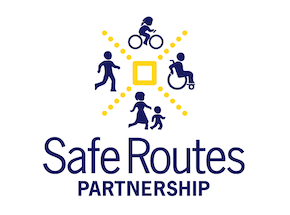Resource Library
In this paper, the 21st Century School Fund and the Center for Cities and Schools at the University of California Berkeley provide a conceptual frame for the joint use of PK-12 public schools.
A survey of the 50-states and laws and statutes that address community use of schools.
In addition to the primary responsibility of school districts to provide high quality teaching and learning, schools are increasingly being called on to help create and sustain active, healthy communities and vibrant neighborhoods.
The following optional policy is for use by districts that elect to establish formal agreements with public or private entities to jointly use either school facilities or community facilities in order to share costs and risk.
For many reasons, renovating schools located near the families they serve is a much better option than constructing a new school on the outskirts of a community.
The Tennessee Recreation Parks and Association created a joint use finder to explore the different types of agreements across the state. Agreements range from open use, written use agreements, verbal use agreements, policy.
This report gives some background information on Safe Routes to School and details challenges and opportunities in program implementation.
This study examines the socio-demographic and environmental influences on a child’s mode of travel between home and school in a mid-sized Canadian city.
This is a systematic review of 38 articles that investigate the environmental (physical, economic, socio-cultural and political) correlates of active transportation (AT) among young people aged 5-18 years.
This study investigates the characteristics of student travel behaviors before the implementation of SRTS program and identifies the influential factors affecting the number of children to walk or bike to school.
This brief summarizes research on active transport to school, physical activity levels and health outcomes.
This article suggests that public policies, informed by research, that support population-level approaches to increase physical activity, is needed to increase physical activity opportunities to racial/ethnic minority communities.
The CDC initiated the Common Community Measures for Obesity Prevention Project (the Measures Project) to identify and recommend a set of obesity prevention strategies and corresponding suggested measurements that local governments and communities can use to plan, implement, and monitor initiatives to prevent obesity.
This study examines predictors of active commuting to school among children and adolescents’ over a 2-year period.
In this study of children aged 8-10, for every additional park located within a half-mile of their home, girls are twice as likely to walk to school.
Active Living by Design focused on two communities in Portland, Oregon: one urban, low-income community with poor bicycle/pedestrian and park infrastructure, the other a semirural community expected to see urban growth in the next 30 years.
This paper provides insight on whether bicycling for everyday travel can help US adults meet the recommended levels of physical activity and what role public infrastructure may play in encouraging this activity.
This article discusses how the built environment of a community affects children’s opportunities for physical activity.
This article reviews the Partnership for Active Communities efforts to bring together multidisciplinary organizations to create a 5-year project to support increased walking and bicycling in the Sacramento, CA area.
This study examines 496 parental questionnaires to evaluate the transport practices of school children and perceived factors that influenced parental decisions regarding their child’s use of active transport to commute to school.

